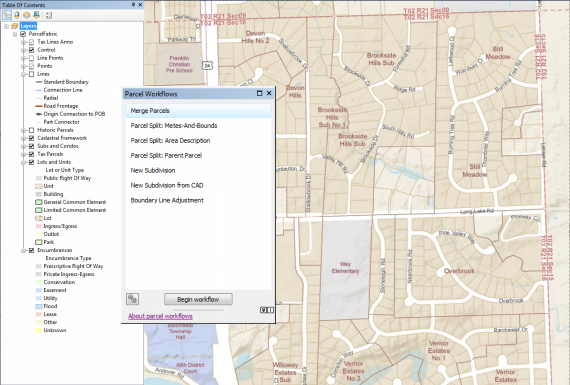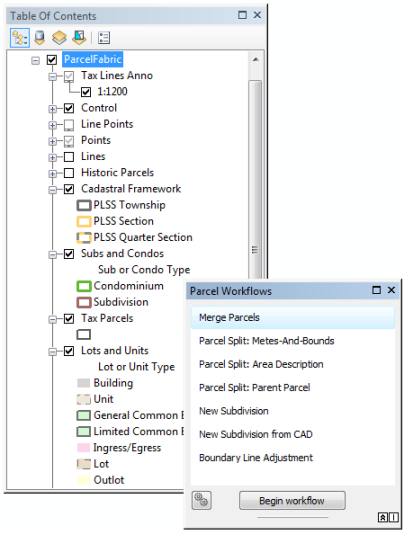Available with Standard or Advanced license.
The Local Government Information Model is based on a harmonized information model of GIS datasets, web services, and maps that connect information and integrates processes across typical government departments. It helps local governments run their operations more efficiently, communicate more effectively, save time and money, and engage their citizens in more meaningful ways. In addition, it also supports data sharing between local governments and regional, state, and federal agencies.
The information model can be configured to support specific business needs in your organization. You can select and implement specific themes that are part of this integrated information model, for example, configure the Local Government Information model for parcel editing.
The parcel fabric can be enabled with the Local Government Information Model.

When the Local Government Information Model is enabled on a parcel fabric, parcel types, attributes, and domains that reflect the editing requirements of Local Government parcel maintenance are added to parcel fabric tables. The parcel fabric layer is displayed and symbolized using the Local Government configuration, and the parcel fabric can be used in efficient and automated parcel editing workflows.

Enabling the Local Government Information Model
A parcel fabric can be enabled with an information model in the Catalog window. Right-click your parcel fabric, point to Information Models, and click Enable Information Model to open the Enable Fabric Information Model wizard.
The Local Government Information Model uses a feature-linked annotation class (feature linked to parcel fabric lines). If you have an existing lines feature-linked annotation class, the Enable Fabric Information Model wizard detects and uses the annotation class. If no lines feature-linked annotation class is detected, a new lines feature-linked annotation class is created.
If schema errors are found during the enabling process, the parcel fabric will not be enabled with the Local Government Information Model. Schema errors are listed on the Information model report page of the Enable Fabric Information Model wizard and need to be corrected before your parcel fabric can be enabled with the Local Government Information Model.
Learn more about enabling and configuring the Local Government Information Model
Parcel editing workflows
Once you have successfully enabled your parcel fabric with the Local Government Information Model, you can use automated parcel editing workflows. These workflows are common editing workflows used by local governments for parcel maintenance. To access the workflows, click Parcel Editor > Parcel Workflows.